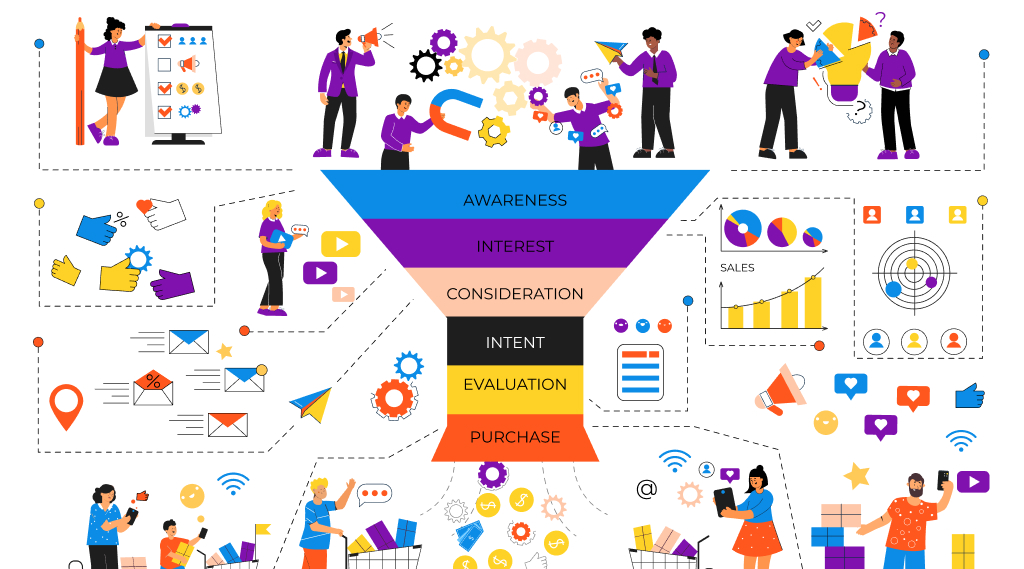Introduction
Did you know that many businesses struggle to find good leads? That’s why it’s so important to learn about demand generation, which is all about attracting the right kind of leads who are really interested in what you offer.
One way to fix this is by using a demand generation campaign. This means you focus on getting more people to notice your brand. When more people know about your business, it’s easier to turn them into leads.
In this blog, you’ll see how companies are using social media, email, influencers, and data to reach their customers better. You’ll also learn about the power of storytelling, interactive content, and sustainability in marketing.
As we move into 2024, marketing is becoming more competitive and data-focused. This collection of real-world examples is here to inspire you and help you grow your business.
What is demand generation?
Demand generation is a marketing strategy focused on creating awareness and interest in a company’s products or services to drive demand and generate leads. It involves a variety of tactics and channels aimed at engaging potential customers and guiding them through the sales funnel. Unlike lead generation, which focuses on capturing contact information, demand generation is about building relationships and nurturing prospects until they are ready to make a purchase.
It encompasses activities such as content marketing, social media engagement, email marketing, and events, all aimed at creating demand and driving revenue for the business.
12 Real-world demand generation campaign examples
Here are 12 real-world demand generation campaign examples that showcase innovative and effective strategies from various industries:
1. Spotify’s personalized playlists:
Strategy: Spotify’s “Discover Weekly” and “Release Radar” playlists use personalized algorithms to recommend music based on users’ listening history. This keeps users engaged and coming back for more.
Impact: Increased user retention, loyalty, and word-of-mouth marketing.
2. HubSpot’s inbound marketing:
Strategy: HubSpot creates valuable content (blogs, ebooks, webinars) to attract potential customers. They nurture leads through email campaigns and educational resources.
Impact: High-quality leads, brand authority, and customer trust.
3. Airbnb’s referral program:
Strategy: Airbnb encourages users to refer friends by offering travel credits. This drives user acquisition and builds a community of advocates.
Impact: Rapid growth, increased bookings, and strong brand loyalty.
4. Coschedule’s headline analyzer:
Strategy: Coschedule provides a free tool to analyze headlines for content performance. It attracts users and positions the brand as an industry expert.
Impact: Increased website traffic and brand credibility.
5. WordStream’s google ads performance grader:
Strategy: WordStream offers a free tool to evaluate Google Ads performance. It adds value for users and establishes WordStream’s expertise.
Impact: Lead generation, brand recognition, and trust.
6. Educational webinars:
Strategy: Hosting webinars on relevant topics educates the audience while subtly promoting products or services.
Impact: Lead generation, thought leadership, and engagement.
7. Content marketing:
Strategy: Creating educational content (blogs, whitepapers, infographics) addresses pain points and builds trust.
Impact: Increased organic traffic, brand authority, and conversions.
8. Social media engagement:
Strategy: Leveraging social media for organic content and community marketing.
Impact: Brand visibility, engagement, and customer relationships.
9. Email marketing with personalization:
Strategy: Crafting personalized email campaigns based on user behavior.
Impact: Higher open rates, click-through rates, and conversions.
10. PPC advertising:
Strategy: Targeted paid content distribution through pay-per-click ads.
Impact: Reaching the right audience, driving traffic, and conversions.
11. Free trials or demos:
Strategy: Offering free trials or demos lets users experience the product.
Impact: Lead conversion, product adoption, and customer satisfaction.
12. Industry events and conferences:
Strategy: Participating in or hosting events showcases expertise and provides networking opportunities.
Impact: Brand exposure, lead generation, and industry influence.
These examples demonstrate creative ways to engage and convert potential customers, aligning marketing efforts with business goals to drive revenue growth.
Conclusion
Successful demand generation tactics aim to make people aware of your product and grab their attention before they start looking for a solution. This way, when they do need a solution, they think of your product first.
The power of demand generation lies in its ability to not only attract new customers but to nurture lasting relationships. Companies like Spotify, Airbnb, and Nike understand the significance of providing personalized experiences and fostering a sense of community. Such practices generate not just demand but also brand loyalty and advocacy.
Ready to enhance your demand generation strategy? Book your call with Revvgrowth today and discover how our modern direct mail and gifting solutions, paired with AI tools, can inspire action and drive results for your brand!


